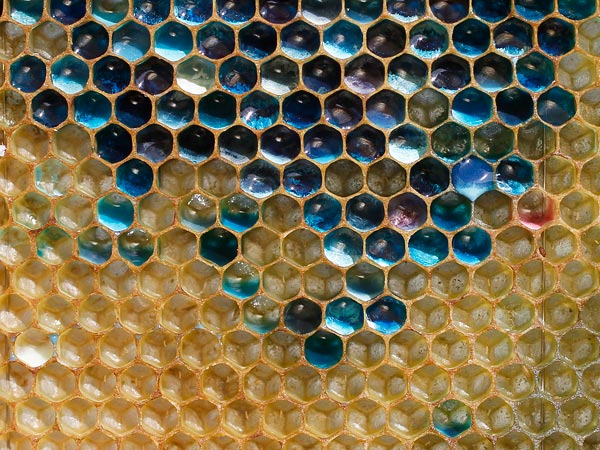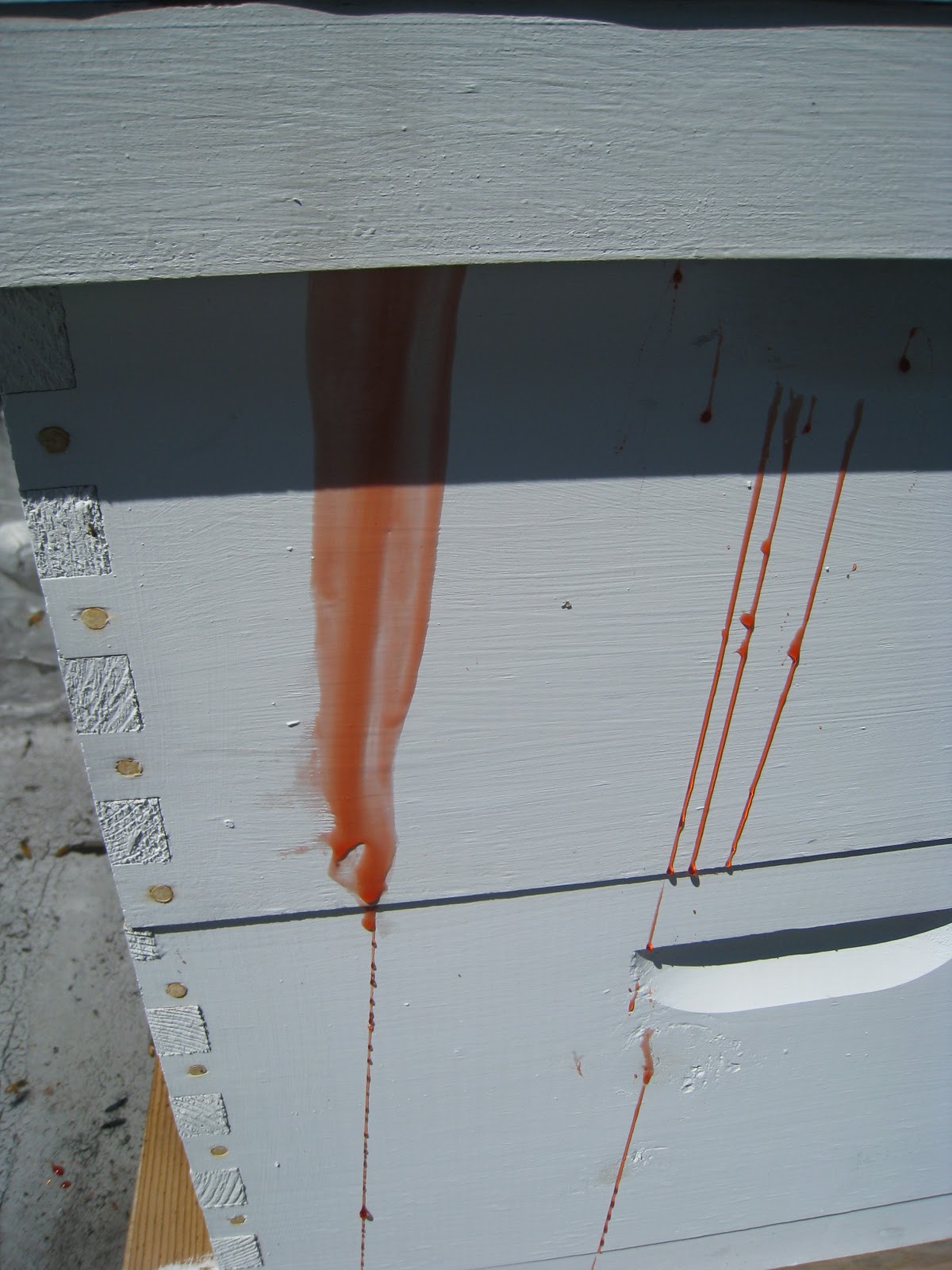Honey-colored means having the color of honey. But what color is that? Beekeepers in northeastern France were recently upset when their hives began producing blue and green honey, and beekeepers in Brooklyn, New York were equally upset when their hives recently began producing bright red honey.
Worker honeybees collect nectar, store it in specialized honey sacs, and carry it back to the hive where they transfer it to other worker bees who put it into the honeycomb cells and turn it into honey by a process of ingestion, regurgitation, and evaporation. Apart from the yuck factor involved, what, exactly, is the original nectar? Basically, it’s a sugar-rich liquid produced by “plants,” consisting of a brew of many chemicals, mainly natural sugars (sucrose, glucose, and fructose). But honeybees are opportunists and will forage on any sweet liquid found in their flight paths – and that includes everything from maraschino cherry juice to processed candy produced by industrial plants.
The French beekeepers had good reason to be upset about their blue and green honey: “The colored honey could not be sold because it did not meet France’s standards of honey production: It was not obtained from the nectar of plants and it deviates from the standard coloring of honey (nearly colorless to dark brown). That’s bad news for a region that produces a thousand tons of honey a year and has already had to cope with a high bee mortality rate and low honey production after a harsh winter. An investigation by beekeepers in the town of Ribeauville uncovered the cause of the problem: Instead of collecting nectar from flowers, local bees were feeding on remnants of colored M&M candy shells, which were being processed by a biogas plant roughly 2.5 miles (4 kilometers) away. The waste-processing plant discovered the problem at the same time the beekeepers did and quickly cleaned any outdoor or uncovered containers that M&M waste was stored in. The candy remains will now be stored in a covered hall” (source).
As for red honey, “Bee enthusiasts, based around Red Hook, Brooklyn, were left confused after inspecting their hives to find a thick, scarlet substance that they compared to cough syrup. One, who had the substance tested, found it contained Red Dye Number 40, a food coloring, which is also found in maraschino cherry juice. It is thought that local bees enjoyed visits to the vats at the nearby Dell’s Maraschino Cherries Company before returning to their hives” (source).
“When honeybees find a source of high-density food, such as the high-fructose corn syrup (HFCS) used in the manufacture of maraschino cherries, they don’t think twice about whether the source is natural, safe, or convenient. They take it for what it is—a chance to make it to next year. Bees are much less discriminating than we are when it comes to food. If it has sugar in it, they’ll take it back to the hive and take as much of it as they can…This sort of thing happens pretty often. A state apiculturalist mentioned at least two incidents to me. In Long Island, a beekeeper found honey of ALL colors in his hives—red, blue, green, and more. Eventually he found that his hives were within a mile of a candy factory that used brightly colored corn syrup in its manufacturing process. Another beekeeper in Syracuse wound up with peppermint honey after he placed his hives near a mint factory” (source).
Ironically, true blue honey is prized in the U.S., and it comes from the nectar of real organic plants. Some beekeepers originally ascribed the rare color to huckleberry juice, but Dr. John Ambrose, Associate Professor Entomology/Extension Apiculturist, North Carolina State University, tracked the source down to the blossoms of sourwood trees. He concluded that blue honey is produced from sourwood trees that grow in soils with high aluminum content. The color results from a combination of the aluminum and substances in the nectar of the sourwood. The nectar itself isn’t blue; the color change occurs due to acidification as the bees turn the nectar into the honey (see “The Mystery of Blue Honey” and “Sourwood Honey”).
Honey-colored? Kudzu can yield purple tinted honey, sumac can produce red honey, there’s white honey from Hawaii, and buckwheat honey can be almost black. Check out Wikipedia: Monofloral honey for more on the origins, characteristics, and colors of honey predominantly made from the nectar of one plant species.
“Oh, Miss West, I’ve heard so much about you. Mae West: Yeah, honey, but you can’t prove a thing.” (Mae West, American Actress and sex symbol, 1892-1980)
Article by Bill Norrington







